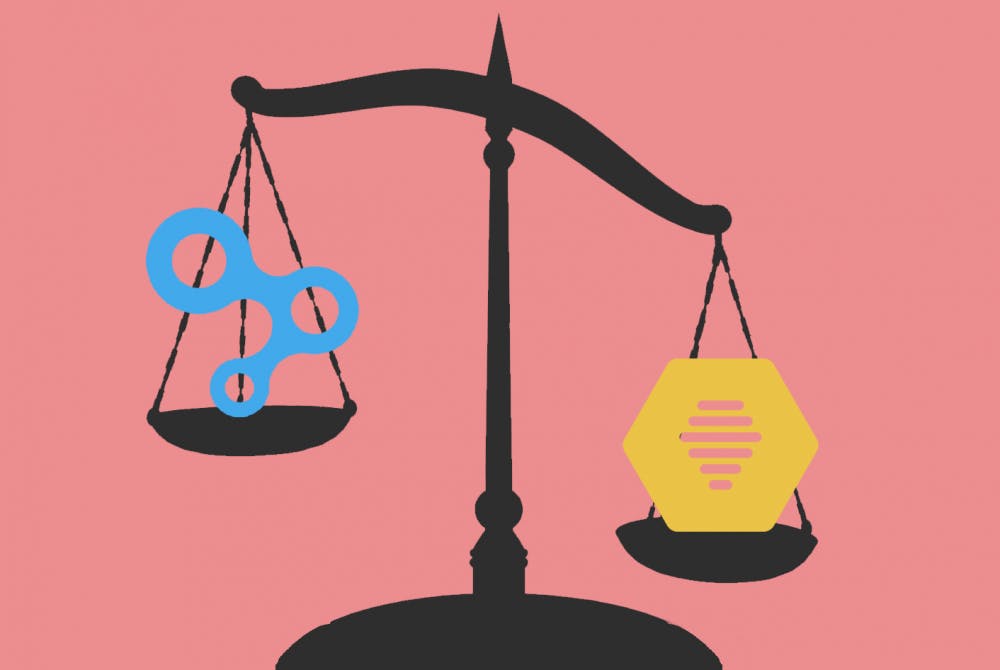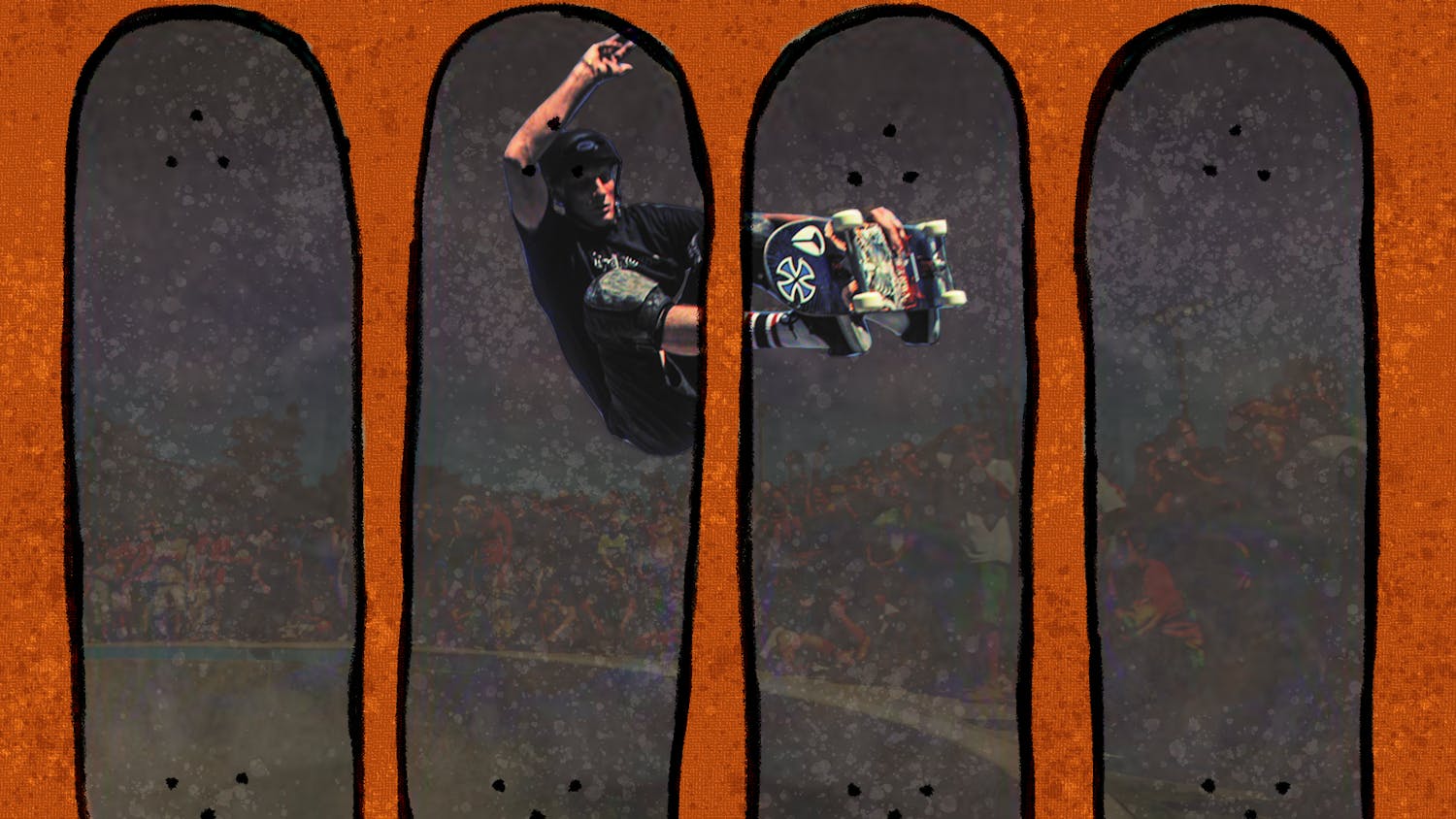It can be hard to meet people. We've all been there. And at some point, downloading a dating app sounds like the most logical solution. But with so many options, it can be hard to decide which one to try. This week I ventured into the world of dating apps to compare and contrast. How would the experience of online dating differ between Tinder, Bumble, and Hinge? I set up three nearly identical profiles on the apps—my location radius set to ten miles, my gender of preference set to male, and the age range between 20 and 28 years old.
Tinder:
The mainstream hookup app we all love to hate. I’ve installed and uninstalled this app more times than I care to admit. Somehow I always seem to download Tinder right around midterm season, head hunched over in Van Pelt swiping madly for low–stakes procrastination and cheap validation. For better or worse, Tinder is the most direct hookup app and probably the most well known of the three. You get a mix of vaguely boring attempts at conversation and blatantly forward “wanna bang?” messages. One guy just opened with a series of strange gifs.
Pros: In terms of variety and number of users, Tinder wins. You’ll find everyone from your hot TA to your professor to the FroGro checkout guy. Depending on how wide you set your radius and age range you can swipe for hours—that is, until your reach your daily swipe limit.
Cons: It’s annoyingly easy to accidentally Super Like someone, that bright blue thirst signal you can send once a day to your most desirable soulmate. (FYI: If you Super Like me you’re getting a swipe left, sorry.) If you are looking for more than a physical relationship, you aren't too likely to find it here. You will, however, find lots of creepy messages.
Bumble:
Similar to Tinder, Bumble has a swipe right, swipe left interface and the option to Super Like. The catch is, women have to message first. Described as the "feminist dating app," Bumble tries to level the playing field by putting the power of initiating conversation in the woman's hands. You get 24 hours after matching to send a message, otherwise you un–match.
Unlike Tinder, Bumble gives you three “backtracks,” which is the option to undo an accidental left swipe. As an ostensible safeguard against catfishing, a little blue checkmark on a profile picture indicates certified accounts that further cement Bumble's status as a safe and feminist way to date. You can certify your account by taking a selfie that Bumble matches to your pictures using face–matching technology.
Pros: Cuter and chattier than Tinder. The guys I did message were worth the effort.
Cons: Girls, you have to make a move. Even as a self–described feminist, I’m not that into messaging first. Witty one–liners are not my forte. The first day I swiped through, matching up with several dozen guys then closed the app. When I come back two days later, all of them were gone. Yikes.
[Street's Love Issue bring together user–generated essays and stories about love in all its forms]
Hinge:
Right off the bat, Hinge is addictive and underrated. Branding itself as “The Relationship App,” Hinge only connects you with people who you have mutual friends with on Facebook.
Full disclosure, setting up a Hinge account takes work. There's many steps to complete before you can create your account. You start by selecting pictures from Facebook, Instagram or your camera roll. Then, Hinge allows you to disclose as much personal information as you're comfortable with, including your job title, university, political stance, religious views, hometown and current location. You can also indicate “Yes, No, or Sometimes” to alcohol, cigarettes, marijuana, and drugs.
Finally, you pick three icebreaker questions to answer, such as “Best Travel Story," "Two Truths and a Lie," "Go–to Karaoke Song," and "Never Have I Ever.” By the time I got to the icebreakers, I almost gave up. What answer comes across as funny and relatable but not trying too hard? But the work pays off.
Pros: Messaging first is insanely easy, even addictive. Instead of swiping, you like and comment on individual photos or icebreaker answers. The guys were older and subjectively hotter than those on Tinder or Bumble and put more effort into picking decent pictures.
Cons: As it only draws from Facebook mutuals, the Hinge pool is much smaller than Bumble or Tinder. You set your location manually so some of my matches were as far as New York and Boston, which is not ideal for a casual meet–up.
Reflections:
If you’re looking to hookup there’s plenty of bored people out there searching for the same thing. Deep and meaningful connections are few and far between. Dating apps make for an interesting sociological experiment if anything. You’ll find the most familiar faces on Tinder. It’s all fun and games till you have to make the crucial decision to swipe right or left on a casual friend or even worse... ex-hookup. Hinge was a pleasant surprise—one that I could see myself continuing to use. Guys made an effort with their profiles and the high–quality pictures made a difference. Unlike Tinder, there were fewer blurry group pictures of four identical Chads in salmon–colored shorts. The convos seem somewhat promising if not forced and superficial.
Going on actual dates? Well, that’s still pending. To be fair, you get out what you put in and dating apps aren’t really my thing. Somehow sending a sporadic “hey what’s up?” doesn’t land Prince Charming. Catch me looking for connections IRL—on the sweaty Smokes dance floor.
Dating App Superlatives:
Most Matches: Tinder
Most Underrated: Hinge
Cutest Boys: Bumble
Easiest to Initiate: Hinge
Easiest to Set Up: Tinder
Favorite Overall: Hinge







